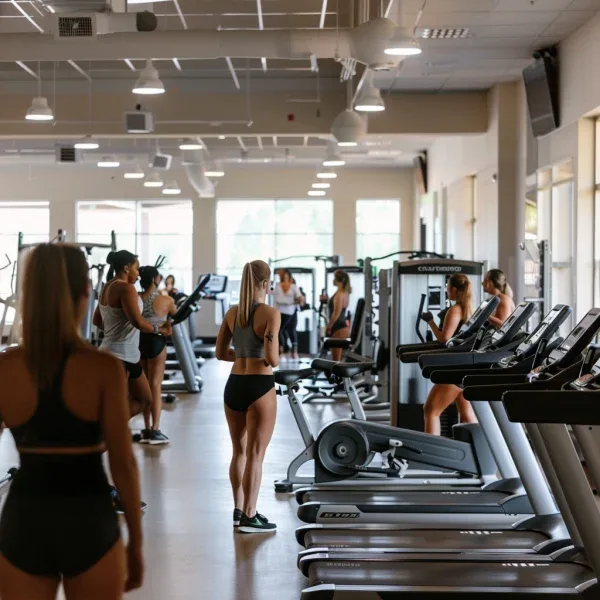by Sofia Moreau
 >
>
In the world of fitness, the possibility of injury is sadly a fact of life. With fitness centers now once again welcoming their dedicated clientele, gym-related injuries are on the rise. Today, we chat with leading health professional Phoebe Rogers from FitLife Clinic to talk about the most prevalent workout injuries, their causes, and how to avoid them.
The Common Gym Injury Culprits
During our workouts, we’re all prone to the occasion tumble and wobble but sometimes these can lead to some seriously painful results. Our muscles and tendons can be overstretched causing a pull or sharp pain. This is known as muscle strain and often occurs during faulty lifting of heavy weights. Tendonitis, or the inflammation of a tendon, is another frequent hurdle for gym-goers. Both of these missteps can affect various body parts like your lower back or your elbow, depriving you of achieving your fitness goal.
Next up on the mighty list is your shoulder. It’s a complex joint, with muscles, ligaments and tendons working in unison for mobility and stability. Overhead exercises or a poor technique can strain the rotator cuff muscles, leading to shoulder injuries.
Let’s not forget about ankle injuries. Exercises focusing on individual legs or strength training for calf muscles often leaves the ankle in a vulnerable position. The foot rolling inwards generates stress and may eventually tear the ligaments on the outside.
Steering Clear of Gym Injuries
Wondering how you can stay injury-free at the gym? Begin with a proper warm-up and cool-down routine. A dynamic warm-up increases blood flow, gets your heart rate going, and helps to loosen up your muscles and joints maximizing your mobility and flexibility. It’s equally important to cool down after your workout to slowly recuperate your heart rate, blood pressure, and body temperature.
Rest days are not to be underestimated. They’re essential for muscle recovery and repair. Proper nutrition and sleep also play a part in promoting muscle growth and repair.
Working on your mobility and flexibility should be included in your training programme. Apart from reducing injury risk, they help reduce muscle tension and stiffness, improve movement performance and efficiency, and correct your posture.
Your workout plan must also focus on strengthening your core which goes beyond just the aesthetic six-pack. Your core muscles, which surround the spine, support and stabilize it. Looking to boost your core strength? Pilates is a perfect solution.
Keep It Sensible, Keep It Safe
It’s easy to feel impatient and rush your progress, but in doing so, you are substantially increasing the risk of injuries. Make sure you mindful about gradually and suitably increasing your weights, starting with low weights, high repetitions, and most importantly, proper form.
What If You’re Already Injured?
If you’ve already experienced the misfortune of a gym injury, how you respond to it makes a substantial difference. A common rule is to remember – RICE: Rest, Ice, Elevation, and Compression. Hot and cold compress therapy can also do wonders in improving the healing process. However, to ensure maximum recovery, it’s best to consult a qualified physical therapist.
Carrying on training with injuries? There is no straight answer to this as it’s usually depending on the injury and person. however, it is usually recommended to keep moving rather than complete cessation. Always listen to your body and get the appropriate medical advice to understand your injury better.
Take a break from training if there has been a serious gym injury and immediately seek help from a trained physical therapist or your local GP. They are equipped to make the correct diagnoses and give you a treatment protocol that meets your need perfectly.
best gym workout, gym injuries, muscle strain, proper warm up, proper cool down, regular rest days, stretch, core workout, increasing weights, RICE protocol, hot and cold compress, physical therapist, training with injuries, breaking from training
Leave a Reply